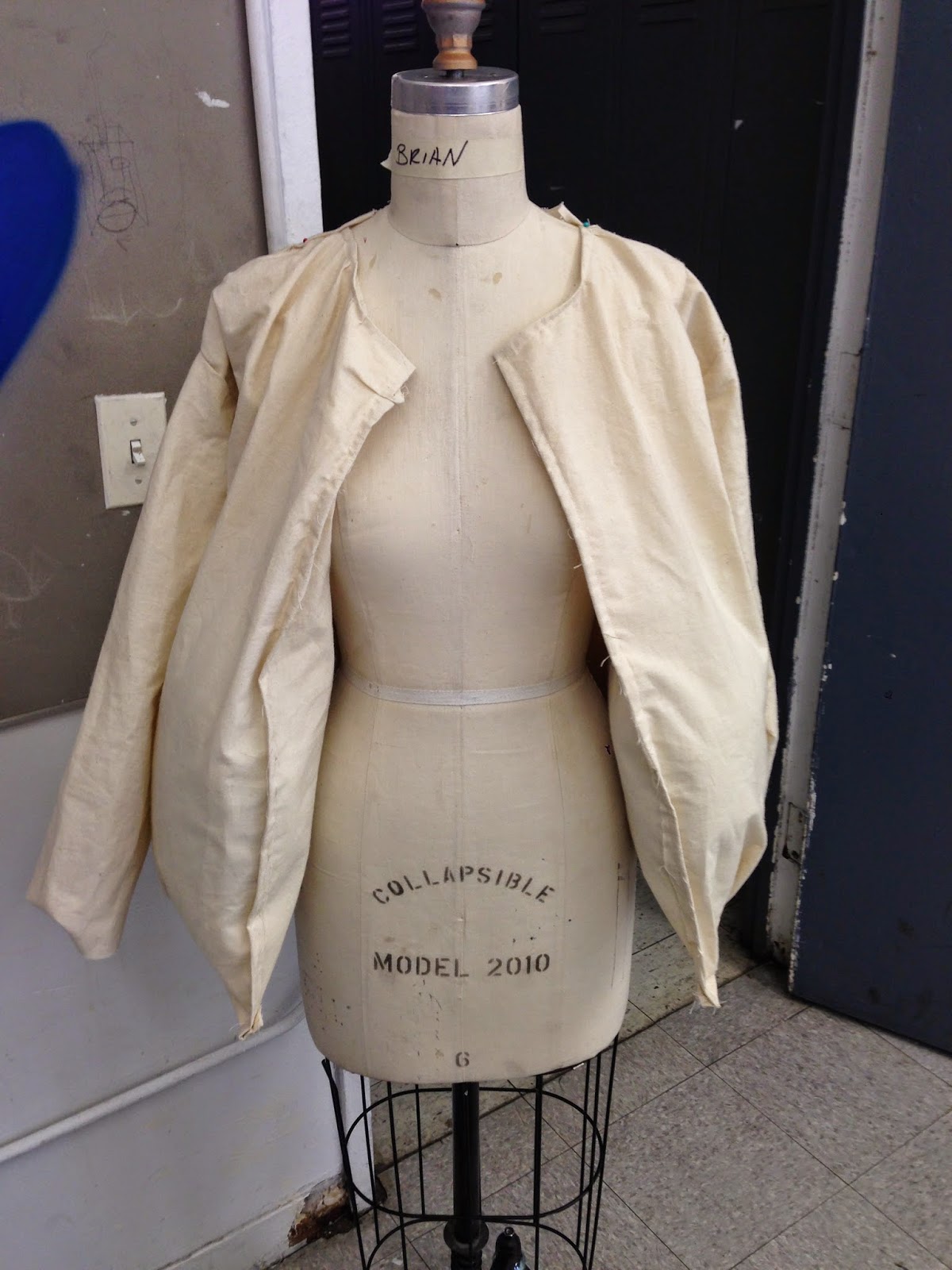Jean-Paul Sartre
describes Quietism as the act of inaction; to be passive when faced
with an indifferent and meaningless universe. Here is a human stuck
within her own labyrinth of Quietism, unable to face the world and is
only able to stare at the blank canvas. Time passes and there is
still inaction; soon she is nothing but a decrepit and dilapidated
statue. Her clothes start to disintegrate but she still stands there,
fearing the consequences of making choices. It is this fear that many
humans face, tapping into the primordial fear that perhaps that it is
human nature to have no meaning in existing.
I'M NOT UGLY I'M AVANT GARDE
Sunday, May 18, 2014
Final Garment Process
I finished apply the plaster to my garment today. Tried to keep it clean but ended up getting plaster all over my floors and walls.
I first tried painting the plaster on with a brush and it worked well but was taking to long. Then the brush started clogging up with plaster.
I also tried different ratios of plaster, but found that a thinner mixture helps the plaster adhere better to the fabric.
Final Garment Process
I went to Mood and bought four yards of this canvas fabric and started drawing out my pattern.
I ended up not needing as much as i thought I needed, which I wish i knew before so I could've asked for one less yard.
Silhouette Study Garment
My final silhouette study garment:
the process:
Having never really sewn anything, much less an entire garment, working with a pattern was a strange experience. I was cutting out these huge pieces of paper and then trying to cut out the same shape from fabric. The entire process ended up taking up to 9 hours, split between 3 days.
This was my first time sewing, and I ran into a couple of problems. Sometimes I would press the pedal too hard and lose control of the fabric. That's the hardest part of sewing, trying to control where the fabric is going and feeding it through the needle.The hems were also hard since the fabric kept puckering. That was because i didn't leave enough seam allowance, so now i know to leave more than 5/8 inches for hems. I thought putting in the sleeves would be harder, but it wasn't that bad. Although the sleeves weren't sewn in that well so maybe I should have done a better job. Overall i'm happy with the way my garment came out.
Wednesday, April 9, 2014
Final Pattern Book
My final pattern book:
My two favorite patterns:
A pattern imposed onto a garment:
Fractals
In
an attempt to merge the visceral with the mindful, mirrors and rays become
fractals throughout space. Why do we need mirrors? Why do we need to look at
ourselves? Is it to reassure ourselves that we exist? To reassure ourselves of
our own identity? Is this something within our DNA? The reflections start
oscillating into double helixes, reminding us that we are only strands of
carbon and hydrogen, only existing on the physical level. Helixes refracting
over each other, concaving and convexing like a mirror. We only bleed red when
punctured and we only bleed blue when we hurt ourselves.
My
research topic deals with how the body affects the development of our
personalities and whether we can develop our identities free from any
influences of the scrutiny of our bodies. This is essentially trying to find
the separation between mind, body, and spirit, and whether either one can exist
without the other. The original motif is based on the image of a concave
mirror, which distorts the light waves that it reflects. If someone were to
look into a concave mirror, he or she will see a distorted image of their face,
and thus a distorted image of their identity on a physical level. This brings
in the question of whether the person is sure of his or her own identity and
existence without the need of seeing it physically with the mirror, since
looking through the mirror distorts the identity and gives false information.
The motif is then arranged to look like a double helix, the very
"language" that our bodies are written in. This then merges the
mental idea of identity with the actually physical, raw materials that we are
made of.
Pattern Process
My Point Groups:
I changed the way my motif is stylized since the point groups started making extreme organic shapes.
Wednesday, March 19, 2014
The Asymmetrical Motif
My motif is based on a concave mirror.
Since I am dealing with themes of Identity through the body, the mirror is the best symbol for this. A concave mirror distorts whatever image it reflects, and thus distorts the body and face when one looks in it.
My color group uses analogous colors, ranging from blue to red. I chose these colors in accordance to the idea of mind/body/spirit and its relations to the Asian belief of chakras. Red is used to symbolize the root chakra, which is the chakra associated with bodily needs and the physical plane. Blue/Indigo is used to symbolize the third eye chakra, which relates to our subconscious mind. Purple is used to symbolize the crown chakra, which is the chakra associated with spirit.
Subscribe to:
Comments (Atom)



























